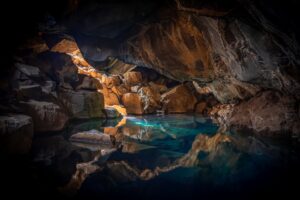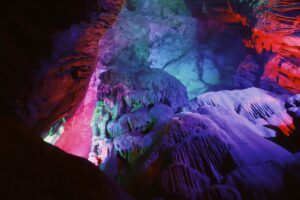Top 10 National Parks in the United States
Top 10 National Parks in the United States
WhiteClouds builds 3D Raised Relief Maps
Did you know we make
3D raised-relief maps
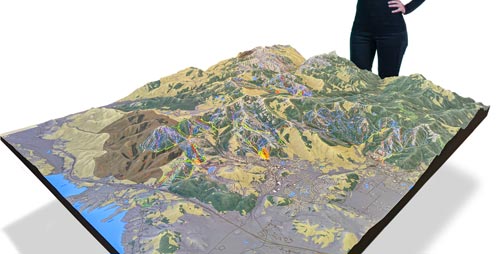
and
3D raised-relief maps
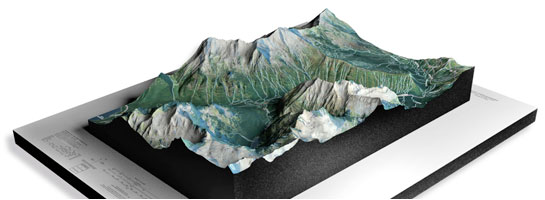
The United States is home to some of the world’s most breathtaking natural wonders, and the best way to experience them is by visiting its national parks. From soaring mountains to pristine lakes, each park offers a unique experience that can leave you awe-inspired. With over 63 national parks in the US, choosing which ones to visit can be overwhelming. That’s why we’ve compiled a list of the Top 10 most visited national parks in the US, so you can start planning your next adventure! (NPS Park Visitors averaged over last 2 years)
#1: Great Smoky Mountains National Park (13.6 Million)
Deep within the lush Appalachian Mountains, a mystical wonderland awaits. A place where misty clouds caress the towering peaks, where ancient forests rustle with the sound of life, and where the harmony of nature and wildlife echoes through the valleys. Ladies and gentlemen, welcome to the Great Smoky Mountains National Park – a mesmerizing destination that will leave you spellbound with its unparalleled beauty.
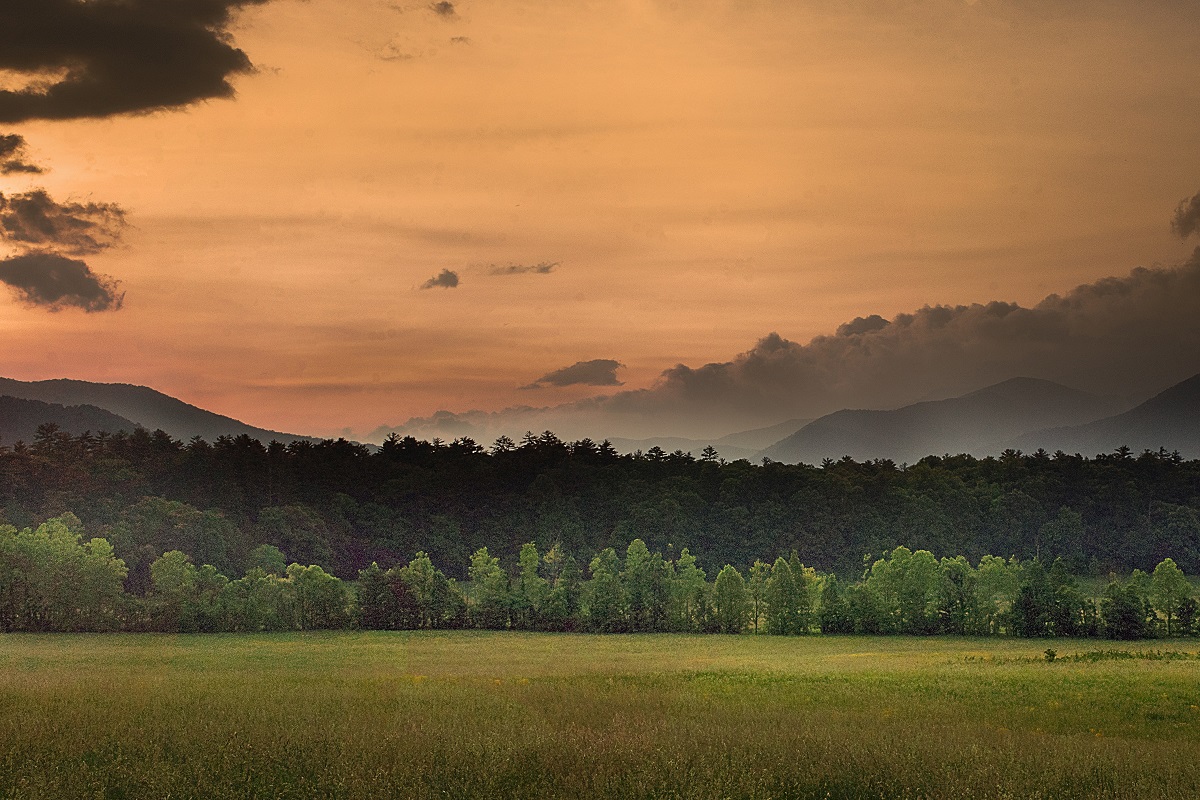
Opening Date: June 15, 1934
Number of Annual Visitors: 13.6 Million
Location: Eastern Tennessee and Western North Carolina
Smoky Mountain National Park Trails and Hikes
Alum Cave Trail: 4.4 miles (7.1 km), Moderate
Charlies Bunion Trail: 8 miles (12.9 km), Strenuous
Chimney Tops Trail: 3.5 miles (5.6 km), Strenuous
Laurel Falls Trail: 2.6 miles (4.2 km), Moderate
Ramsey Cascades Trail: 8 miles (12.9 km), Strenuous
Abrams Falls Trail: 5.2 miles (8.4 km), Moderate
Grotto Falls Trail: 2.6 miles (4.2 km), Moderate
Rainbow Falls Trail: 5.4 miles (8.7 km), Moderate
Mount LeConte Trail: 11 miles (17.7 km), Strenuous
Andrews Bald Trail: 3.6 miles (5.8 km), Moderate
Interesting Facts about Smoky Mountain National Park
The Great Smoky Mountains National Park is one of the most biodiverse regions in the world, with over 19,000 documented species.
It’s also home to the largest synchronized firefly display in the world.
The park has over 850 miles of hiking trails, including a portion of the famous Appalachian Trail.
The Great Smoky Mountains National Park is a UNESCO World Heritage Site.
Stories about Smoky Mountain National Park
Legend has it that the Cherokee once called these mountains “Shaconage,” meaning “place of the blue smoke.”
Visitors have reported seeing a mysterious white stag roaming the park’s Cades Cove area.
During the Civil War, the Great Smoky Mountains served as a hiding place for Confederate soldiers, who sought refuge in the park’s rugged terrain.
History of Smoky Mountain National Park
The Great Smoky Mountains National Park was established in 1934, making it the second national park in the eastern United States. The park’s creation was spearheaded by a group of dedicated individuals who recognized the area’s natural and cultural significance. Over the years, the park has been a source of pride for the surrounding communities, providing economic opportunities and a place for people to connect with nature. Today, the Great Smoky Mountains National Park remains a beloved destination for visitors from around the world, who come to experience the park’s unique blend of natural beauty and cultural heritage.
Smoky Mountain National Park Maps
Smoky Mountain National Park 2D Maps: Canvas Print Maps
Smoky Mountain National Park 3D Maps: Raised Relief Maps
Contact Information for Smoky Mountain National Park
Phone: (865) 436-1200
Address: 107 Park Headquarters Road, Gatlinburg, TN 37738
Website: https://www.nps.gov/grsm/index.htm
The Great Smoky Mountains National Park is a true gem of the American wilderness and #1 on our Top 10 National Parks. With its stunning vistas, diverse wildlife, and rich history, this park is a must-visit destination for anyone seeking to connect with nature and explore the wonders of the world around us. Whether you’re a seasoned hiker, a history buff, or simply someone who appreciates the beauty of the great outdoors, the Great Smoky Mountains National Park has something for everyone. So pack your bags, hit the trails, and immerse yourself in the magic of the mountains.
#2: Zion National Park (4.9 Million)
As the sun rises over the rust-colored cliffs and the mist clears, a stunning vista of red rock formations and deep canyons emerges. Welcome to Zion National Park, a true wonder of nature. This awe-inspiring park has captivated visitors since its opening in 1919, and it continues to attract millions of visitors every year. From its breathtaking landscapes to its rich history and unique wildlife, Zion National Park is a true gem of the American West.
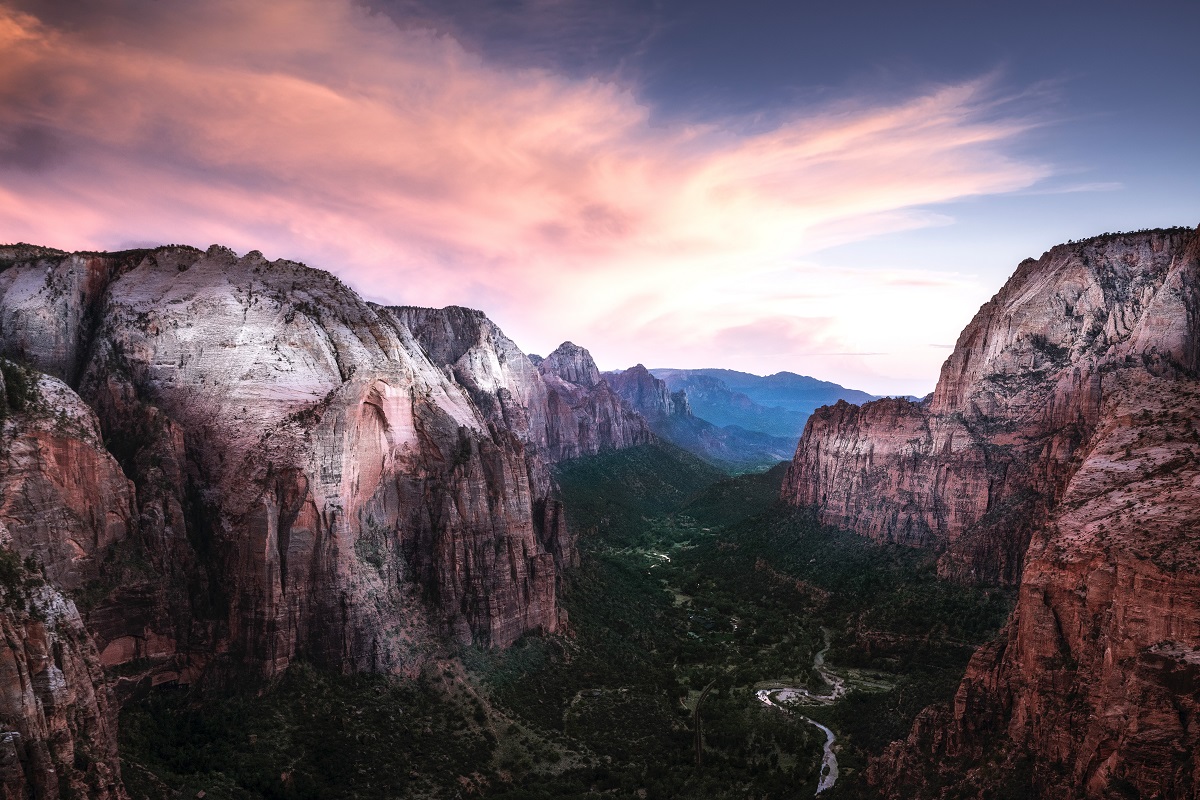
Opening Date: November 19, 1919
Number of Annual Visitors: 4.9 million
Location: Southwestern Utah
Zion National Park Trails and Hikes
Angels Landing Trail: 5.4 miles (8.7 km), Strenuous
The Narrows: varies in length, Moderate to Strenuous
Observation Point Trail: 8 miles (12.9 km), Strenuous
Emerald Pools Trail: 3 miles (4.8 km), Moderate
Weeping Rock Trail: 0.4 miles (0.6 km), Easy
Hidden Canyon Trail: 3.3 miles (5.3 km), Moderate
The Subway Trail: 9 miles (14.5 km), Strenuous
West Rim Trail: varies in length, Strenuous
Riverside Walk: 2.2 miles (3.5 km), Easy
Taylor Creek Trail: 5 miles (8 km), Easy to Moderate
Interesting Facts about Zion National Park
Zion National Park spans over 229 square miles and is home to a diverse array of flora and fauna, including over 900 species of plants and more than 75 species of mammals.
The park’s towering cliffs and canyons were formed over millions of years by the Virgin River and other natural forces.
The park’s most famous hike, Angel’s Landing, offers breathtaking views of the surrounding landscape, but requires a steep ascent up a narrow ridge with sheer drop-offs on either side.
The park is also home to The Narrows, a section of the Virgin River canyon that is so narrow in places that hikers must wade through the water to proceed.
Stories about Zion National Park
One of the most famous stories associated with Zion National Park is that of Frederick Fisher, a ranger who lived in the park during the 1920s and 1930s. Fisher became known for his daring rescues of visitors who found themselves in perilous situations on the park’s cliffs and canyons.
Another notable story is that of hiker Aron Ralston, whose harrowing experience in nearby Blue John Canyon inspired the book and movie “127 Hours”. Ralston was forced to amputate his own arm after becoming trapped under a boulder while hiking alone.
History of Zion National Park
Zion National Park was first established as Mukuntuweap National Monument in 1909, but was renamed Zion National Monument in 1918 and later became a national park in 1919. The park has played an important role in the history of the American West, with early settlers and explorers passing through the area in the mid-19th century. Today, the park is managed by the National Park Service and remains a popular destination for visitors from around the world.
Zion National Park Maps
Zion National Park 2D Maps: Canvas Print Maps
Zion Mountain National Park 3D Maps: Raised Relief Maps
Contact Information for Zion National Park
Phone: (435) 772-3256
Address: Zion National Park, Springdale, UT 84767
Website: https://www.nps.gov/zion/index.htm
With its soaring cliffs, deep canyons, and vibrant colors, Zion National Park is a true natural wonder and #2 on our Top 10 National Parks. As visitors hike through the park’s many trails, they are rewarded with breathtaking views of towering sandstone formations, sparkling waterfalls, and lush vegetation. Whether exploring the hidden depths of a slot canyon or taking in the panoramic vistas from atop a high peak, Zion National Park is a truly unforgettable experience.
#3: Grand Canyon National Park (4.6 Million)
The Grand Canyon National Park is a breathtaking masterpiece of nature that draws in visitors from around the globe. As one of the most iconic and awe-inspiring natural wonders in the world, the park has been captivating travelers for over a century with its magnificent landscapes and geological formations. With its grandeur, history, and interesting facts, the Grand Canyon National Park is a must-visit destination for anyone looking to experience the beauty and wonder of nature.
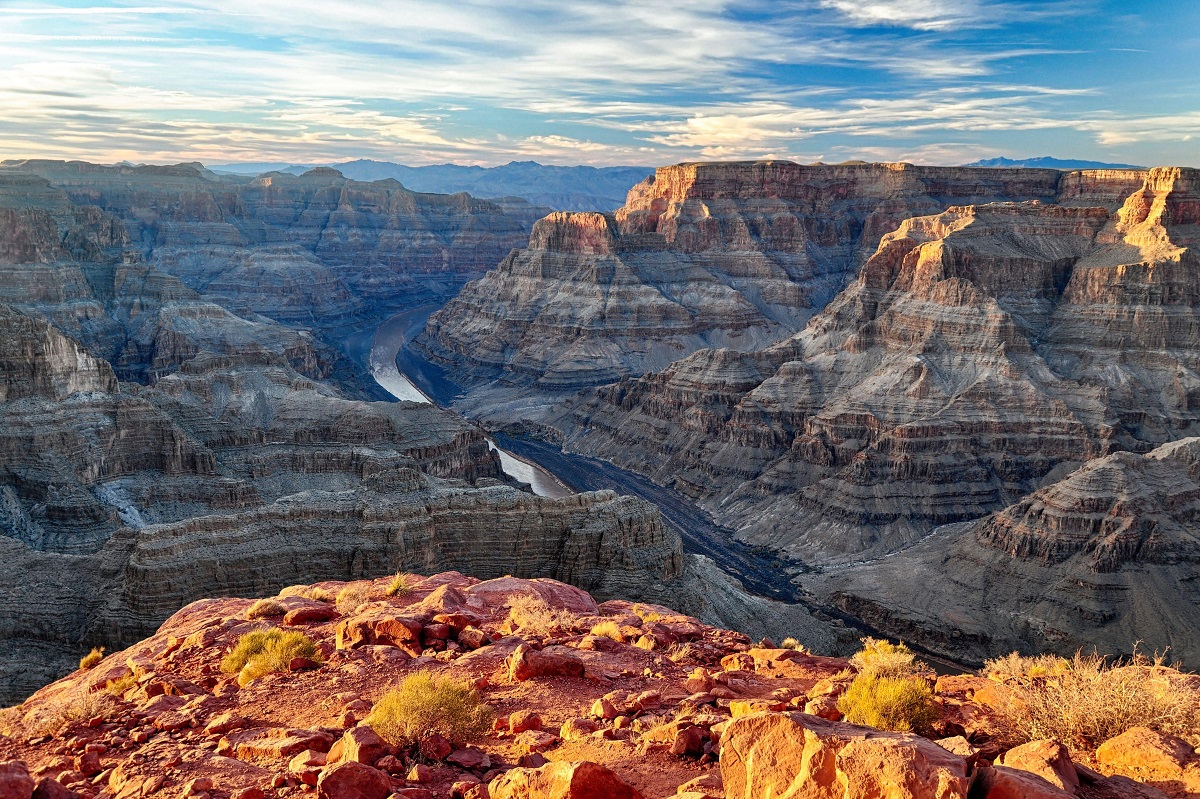
Opening Date: February 26, 1919
Number of Annual Visitors: 4.6 million
Location: Arizona
Grand Canyon National Park Trails and Hikes
Bright Angel Trail: 9.3 miles (15 km) to Plateau Point, Strenuous
South Kaibab Trail: 7.1 miles (11.4 km) to Cedar Ridge, Strenuous
North Kaibab Trail: 14.2 miles (22.9 km) to Ribbon Falls, Strenuous
Grandview Trail: 6.2 miles (10 km) to Horseshoe Mesa, Strenuous
Tanner Trail: 7.2 miles (11.6 km) to Tanner Beach, Strenuous
Rim Trail: varies in length, Easy to Moderate
Hermit Trail: 9.6 miles (15.4 km) to Dripping Springs, Strenuous
Tonto Trail: varies in length, Moderate
Grand Canyon Village Historic Trail: 2.5 miles (4 km), Easy
North Bass Trail: 18.6 miles (29.9 km) to Colorado River, Strenuous
Interesting Facts about Grand Canyon National Park
The Grand Canyon is not the deepest or the longest canyon in the world, but it is known for its overwhelming size and colorful landscape.
The park is home to over 1,500 plant species and 355 bird species, including the endangered California Condor.
The Colorado River, which flows through the park, is over 270 miles long and up to 18 miles wide in some areas.
The rock layers exposed in the canyon are estimated to be around 2 billion years old.
Stories about Grand Canyon National Park
Visitors to the Grand Canyon National Park often share stories of the amazing experiences they had during their visit. One visitor recalls hiking down to the bottom of the canyon and camping overnight. As he gazed up at the stars, he was struck by the absolute silence and tranquility of the canyon. Another visitor describes taking a helicopter tour of the park, which offered a bird’s-eye view of the stunning landscape and gave her a newfound appreciation for the vastness of the canyon.
History of Grand Canyon National Park
The history of the Grand Canyon National Park dates back to the 1800s when explorers first ventured into the canyon. In 1901, President Theodore Roosevelt visited the park and was so enamored with the area that he declared it a national monument. Eighteen years later, it was officially designated as a national park. Since then, the park has been a popular destination for travelers from around the world, with millions of visitors flocking to the area each year to witness its natural beauty and wonder.
Grand Canyon National Park Maps
Grand Canyon National Park 2D Maps: Canvas Print Maps
Grand Canyon National Park 3D Maps: Raised Relief Maps
Contact Information for Grand Canyon National Park
Phone: (928) 638-7888
Address: P.O. Box 129, Grand Canyon, AZ 86023
Website: https://www.nps.gov/grca/index.htm
The Grand Canyon National Park is a treasure of nature that has captivated people for over a century. It is #3 on our Top 10 National Parks. With its vastness, history, and colorful landscape, it is no wonder that millions of visitors make their way to this stunning location every year. Whether you are an avid hiker, a nature lover, or simply someone who appreciates natural beauty, the Grand Canyon National Park is a must-visit destination that should be on everyone’s bucket list.
#4: Rocky Mountain National Park (4.4 Million)
The sun creeps over the snow-capped peaks, casting a warm glow over the Rocky Mountain National Park. The crisp mountain air is filled with the sounds of wildlife, waterfalls, and the rustling of leaves. It’s as if time stands still in this pristine wilderness, offering visitors an escape from the hustle and bustle of everyday life. Welcome to Rocky Mountain National Park, a true natural wonderland.
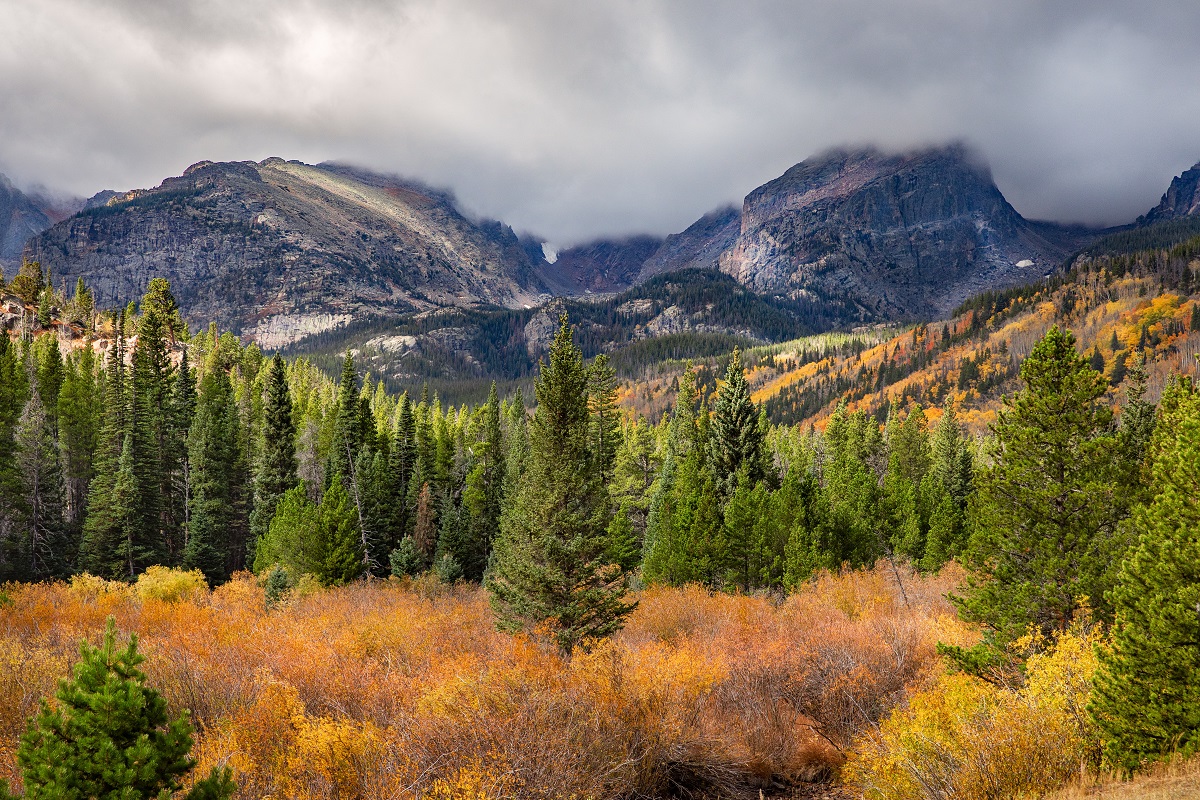
Opening Date: January 26, 1915
Number of Annual Visitors: 4.4 million
Location: Colorado
Rocky Mountain National Park Trails and Hikes
Bear Lake Loop Trail: 0.8 miles (1.3 km), Easy
Emerald Lake Trail: 3.6 miles (5.8 km), Moderate
Sky Pond Trail: 8.4 miles (13.5 km), Strenuous
Longs Peak Trail: 14.5 miles (23.3 km), Strenuous
Flattop Mountain Trail: 8.8 miles (14.2 km), Strenuous
Hallett Peak Trail: 10.2 miles (16.4 km), Strenuous
Mills Lake Trail: 5.6 miles (9 km), Moderate
Odessa Lake Trail: 7.1 miles (11.4 km), Moderate
Chasm Lake Trail: 8.5 miles (13.7 km), Strenuous
Cub Lake Trail: 4.6 miles (7.4 km), Moderate
Interesting Facts about Rocky Mountain National Park
Rocky Mountain National Park spans over 415 square miles and is home to over 60 peaks higher than 12,000 feet.
The park contains 450 miles of streams, 156 named lakes, and 450 miles of hiking trails.
The park is home to an abundance of wildlife, including elk, black bears, bighorn sheep, and mountain lions.
The park also contains unique geological features such as the Continental Divide, which separates the watersheds that drain into the Atlantic and Pacific oceans.
Stories about Rocky Mountain National Park
Hiking to the top of Longs Peak, one of the park’s tallest peaks, is a popular challenge for visitors. The 14,259-foot mountain offers stunning views, but also poses significant risks for hikers. One group of hikers reported encountering a herd of elk on their trek, adding to the adventure.
During the winter months, the park’s Trail Ridge Road is closed to vehicles but open to skiers and snowshoers. One skier reported the exhilaration of skiing down the winding mountain road, with stunning views of the surrounding peaks.
History of Rocky Mountain National Park
Rocky Mountain National Park was established on January 26, 1915, making it one of the oldest national parks in the United States. The park’s creation was the result of a grassroots campaign led by conservationists, including Enos Mills, who worked tirelessly to preserve the natural beauty of the area. The park’s first superintendent, James H. Taylor, helped to develop the park’s infrastructure, including the construction of Trail Ridge Road. Over the years, the park has undergone numerous changes and developments, but its natural beauty and wildlife continue to draw visitors from around the world.
Rocky Mountain National Park Maps
Rocky Mountain National Park 2D Maps: Canvas Print Maps
Rocky Mountain National Park 3D Maps: Raised Relief Maps
Contact Information for Rocky Mountain National Park
Phone: (970) 586-1206
Address: 1000 US Hwy 36, Estes Park, CO 80517-8397
Website: https://www.nps.gov/romo/index.htm
Rocky Mountain National Park offers a unique opportunity to experience the beauty and majesty of the Rocky Mountains. It is #4 on our Top 10 National Parks. From its stunning peaks and lakes to its abundance of wildlife, the park has something to offer everyone. Whether you’re seeking adventure or simply looking to escape the hustle and bustle of everyday life, Rocky Mountain National Park is a must-visit destination.
#5: Acadia National Park (4.1 Million)
Nestled in the rugged coast of Maine lies a gem of natural beauty, a place that has captured the hearts of adventurers and nature lovers alike. As you step foot in Acadia National Park, you’ll be greeted by breathtaking vistas, soaring mountains, and crystal-clear waters that will leave you speechless. It’s a place where you can leave your worries behind and immerse yourself in the tranquility of nature.
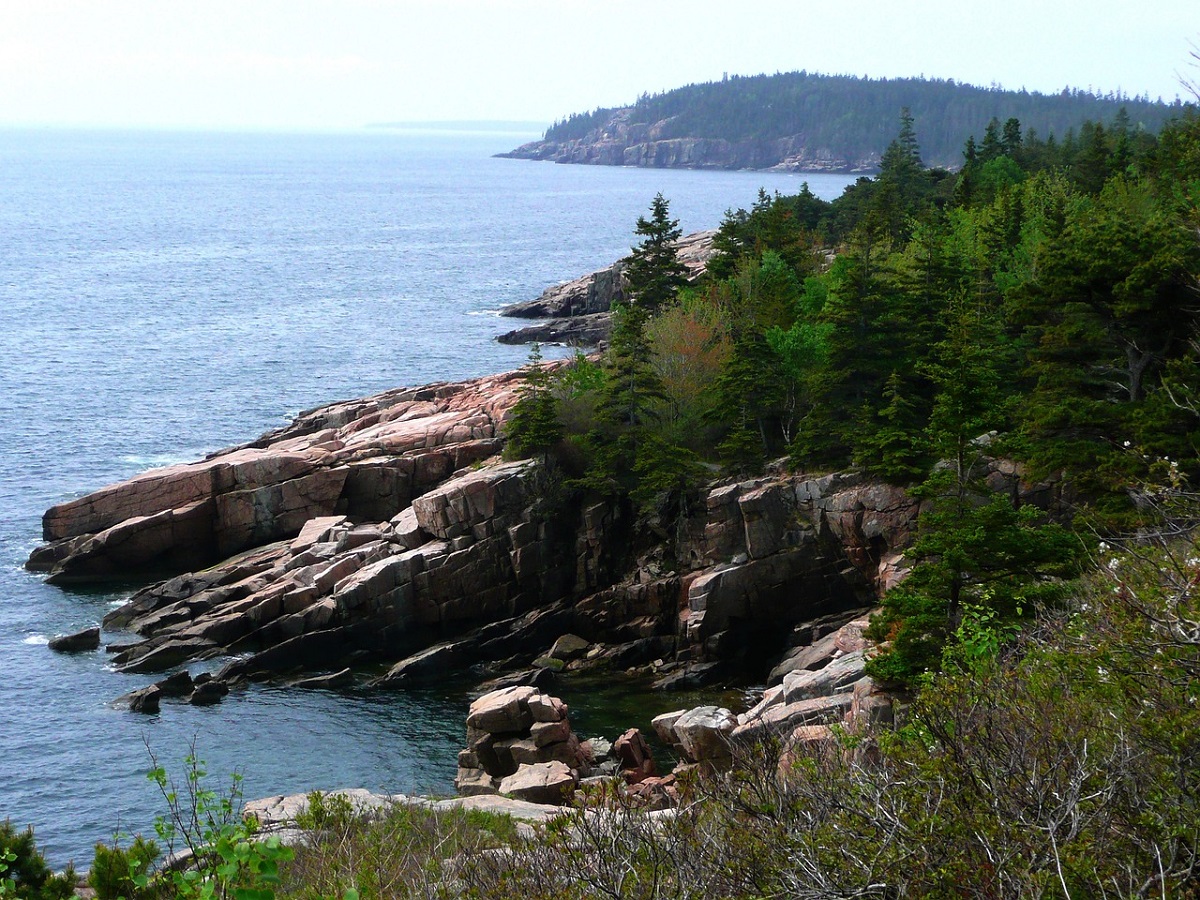
Opening Date: July 8, 1916
Number of Annual Visitors: 4.1 million
Location: Mount Desert Island, Maine
Acadia National Park Trails and Hikes
Precipice Trail: 1.6 miles (2.6 km), Strenuous
Jordan Pond Path: 3.5 miles (5.6 km), Easy
Cadillac Mountain Summit Trail: 7.4 miles (11.9 km), Strenuous
Beehive Trail: 1.6 miles (2.6 km), Strenuous
Ocean Path: 4 miles (6.4 km), Easy
Gorham Mountain Trail: 3 miles (4.8 km), Moderate
South Bubble Trail: 1.6 miles (2.6 km), Moderate
Great Head Trail: 1.8 miles (2.9 km), Moderate
Wonderland Trail: varies in length, Moderate to Strenuous
Penobscot Mountain Trail: 4.4 miles (7.1 km), Strenuous
Interesting Facts about Acadia National Park
Acadia National Park covers over 49,000 acres, making it one of the largest national parks on the East Coast.
The park is home to Cadillac Mountain, the tallest peak on the eastern seaboard of the United States.
Acadia has more than 120 miles of hiking trails, ranging from easy strolls to challenging climbs.
The park is home to over 40 different species of mammals, including black bears, moose, and coyotes.
Stories about Acadia National Park
One of the most popular activities in Acadia National Park is watching the sunrise from the top of Cadillac Mountain. People from all over the world gather at the summit to witness the sun peeking over the horizon, casting a golden glow over the rugged landscape. It’s a magical experience that will stay with you forever.
Another favorite pastime is kayaking along the rocky coastline. As you paddle through the calm waters, you’ll be able to explore hidden coves, rocky outcroppings, and pristine beaches. You may even spot some seals playing in the surf!
History of Acadia National Park
Acadia National Park has a rich history that dates back to the early 1900s. In 1901, wealthy philanthropist John D. Rockefeller Jr. began purchasing land on Mount Desert Island with the goal of preserving the area’s natural beauty. He donated the land to the federal government in 1916, and Acadia National Park was born.
Over the years, the park has faced many challenges, including devastating fires, invasive species, and overuse by visitors. But through it all, Acadia has remained a shining example of natural beauty and conservation. Today, it continues to inspire and delight visitors from all over the world.
Contact Information for Acadia National Park
Phone: (207) 288-3338
Address: P.O. Box 177, Bar Harbor, ME 04609-0177
Website: https://www.nps.gov/acad/index.htm
Perched on the rocky coast of Maine, Acadia National Park is a place of rugged beauty and endless wonder. It is #5 on our Top 10 National Parks. From the soaring heights of Cadillac Mountain to the tranquil shores of Jordan Pond, the park is a true natural gem. With miles of hiking trails, serene lakes, and abundant wildlife, Acadia National Park is a place of peace and serenity, where visitors can immerse themselves in the beauty of nature and forget about the worries of the world.
#6: Yellowstone National Park (3.9 Million)
Nestled in the heart of the Rocky Mountains, surrounded by awe-inspiring natural beauty and home to an abundance of wildlife, lies one of the most magnificent and captivating national parks in the world – Yellowstone National Park. From the geysers of Old Faithful to the tranquil beauty of Yellowstone Lake, Yellowstone National Park is a place of incredible natural beauty and wonder. As visitors explore the park’s many wonders, they are greeted by an incredible array of wildlife, from majestic bison to elusive wolves. With so much to see and do, grab a map of Yellowstone National Park. This a must-see destination for anyone who loves the great outdoors.
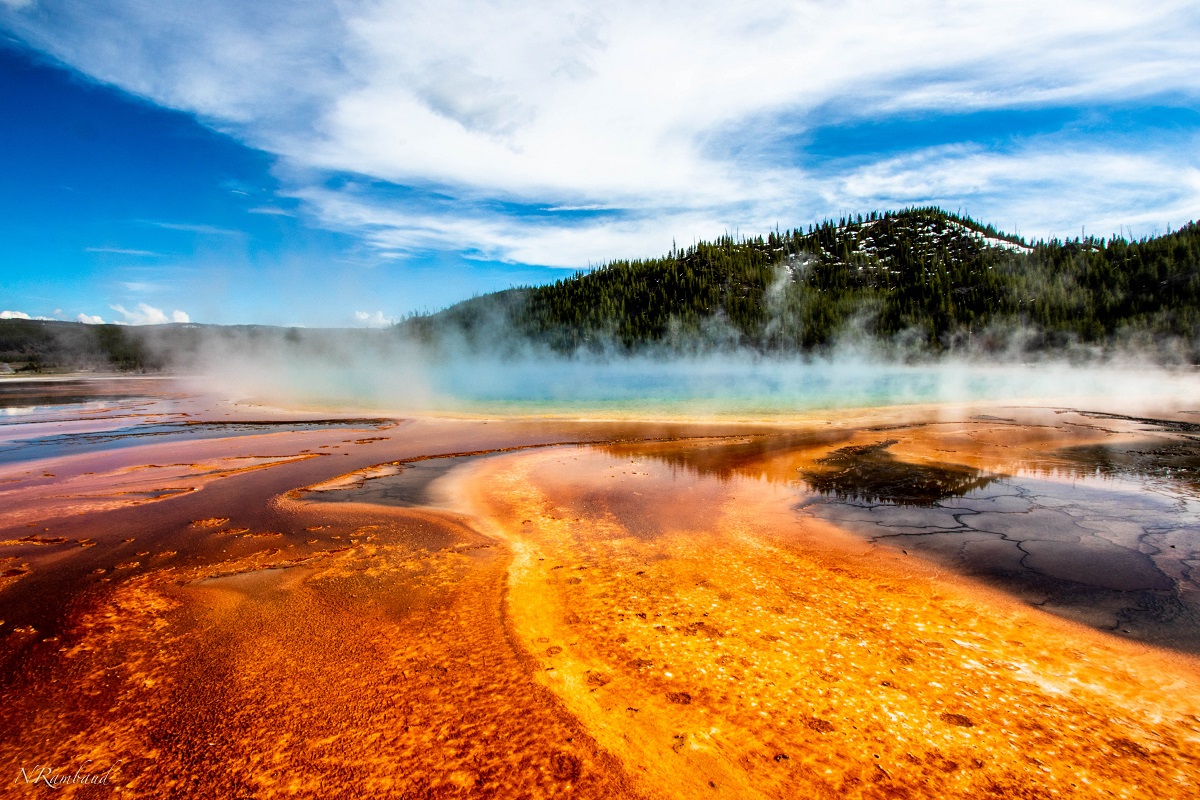
Opening Date: March 1, 1872
Number of Annual Visitors: 3.9 million
Location: Wyoming, Montana, and Idaho
Yellowstone National Park Trails and Hikes
Uncle Tom’s Trail: 0.6 miles (1 km), Strenuous
Mount Washburn Trail: 6.4 miles (10.3 km), Moderate
Mystic Falls Trail: 2.4 miles (3.9 km), Moderate
Beaver Ponds Loop Trail: 5 miles (8 km), Moderate
Bunsen Peak Trail: 4.6 miles (7.4 km), Moderate
Fairy Falls Trail: 5.4 miles (8.7 km), Easy to Moderate
Lone Star Geyser Trail: 5.8 miles (9.3 km), Easy
Elephant Back Trail: 3.5 miles (5.6 km), Moderate
Storm Point Trail: 2.3 miles (3.7 km), Easy to Moderate
Mount Everts Trail: 5.6 miles (9 km), Moderate
Interesting Facts about Yellowstone National Park
Yellowstone is home to over 500 geysers, more than anywhere else on earth; the park contains half of the world’s hydrothermal features; it is one of the largest active volcanic systems in the world; and it is home to the largest bison herd in the United States.
Stories about Yellowstone National Park
One of the most incredible experiences in Yellowstone is the sight of the park’s resident grizzly bears. A friend of mine was hiking near Yellowstone Lake when she stumbled upon a grizzly sow and her cubs. She backed away slowly, keeping a respectful distance, but the mother bear started to charge. Thankfully, my friend was able to safely retreat to a nearby ranger station. It’s a reminder that Yellowstone is truly wild, and visitors must always exercise caution.
History of Yellowstone National Park
Yellowstone National Park was the first national park in the United States and the world. It was established by an act of Congress in 1872, signed into law by President Ulysses S. Grant. The park was created to protect the region’s natural wonders and wildlife from exploitation and commercial interests. Over the years, Yellowstone has become a symbol of the American conservation movement and a beloved destination for nature lovers from all over the world.
Yellowstone National Park Maps
Yellowstone National Park 2D Maps: Canvas Print Maps
Yellowstone National Park 3D Maps: Raised Relief Maps
Contact Information for Yellowstone National Park
Phone: (307) 344-7381
Address: P.O. Box 168, Yellowstone National Park, WY 82190-0168
Website: https://www.nps.gov/yell/index.htm
Yellowstone National Park is a place of unparalleled beauty and wonder, where visitors can witness the awesome power of nature and encounter wildlife in its natural habitat. It is #6 on our Top 10 National Parks. From its stunning geysers and hot springs to its vast wilderness areas and diverse wildlife, Yellowstone is a must-see destination for anyone who loves nature and adventure. So why not plan your next vacation to this iconic park and experience the wonder for yourself?
#7: Yosemite National Park (3.5 Million)
The early morning sun begins to cast a warm glow over the towering granite cliffs, illuminating the majestic waterfalls and pristine meadows. The crisp air carries the scent of pine and the sound of a distant river. This is Yosemite National Park, a place where nature’s beauty and power converge to create an awe-inspiring experience like no other.
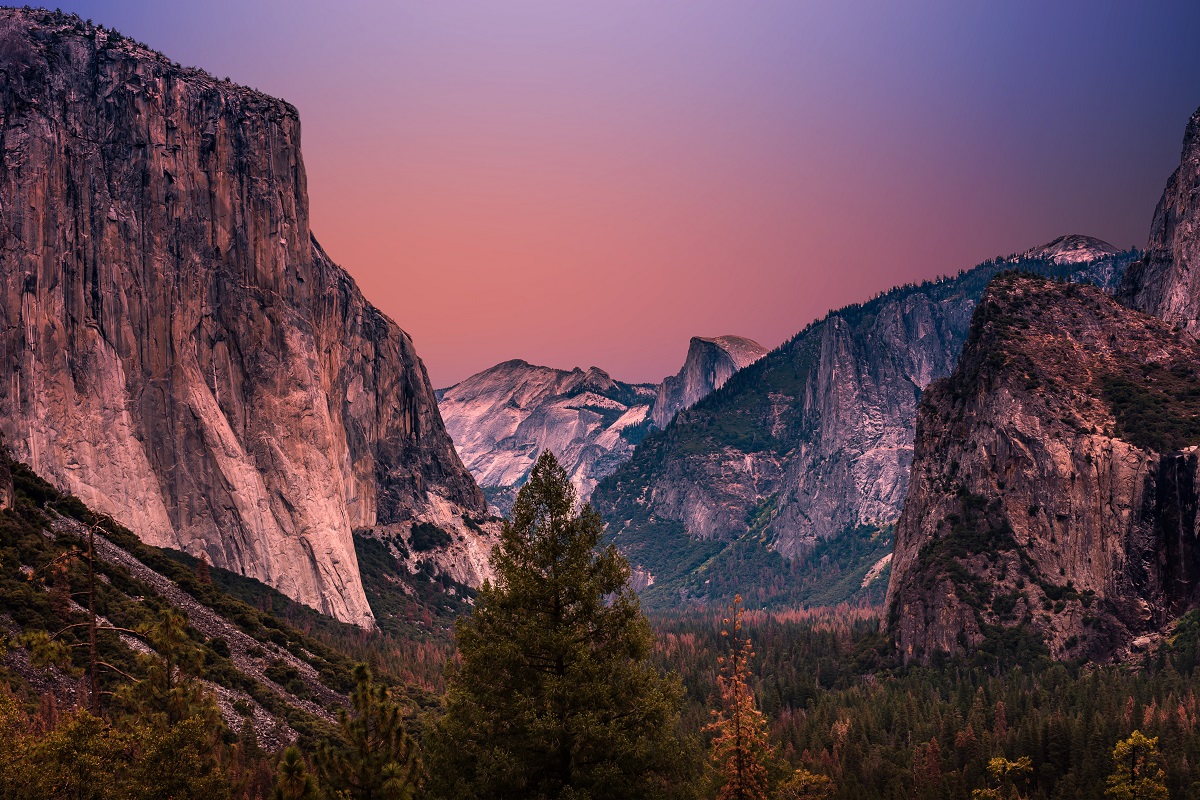
Opening Date: October 1, 1890
Number of Annual Visitors: 3.5 million
Location: California
Yosemite National Park Trails and Hikes
Half Dome Trail: 14.8 miles (23.8 km), Strenuous
Mist Trail: 7 miles (11.3 km), Moderate to Strenuous
Yosemite Falls Trail: 7.2 miles (11.6 km), Strenuous
Four Mile Trail: 4.8 miles (7.7 km), Strenuous
Panorama Trail: 8.5 miles (13.7 km), Moderate
Glacier Point Trail: 4 miles (6.4 km), Easy
Upper Yosemite Falls Trail: 7.6 miles (12.2 km), Strenuous
Vernal and Nevada Falls Trail: 6.4 miles (10.3 km), Moderate to Strenuous
Cathedral Lakes Trail: 8 miles (12.9 km), Moderate
Sentinel Dome Trail: 2.2 miles (3.5 km), Moderate
Interesting Facts about Yosemite National Park
Yosemite is home to the world’s largest granite monolith, El Capitan, which rises more than 3,000 feet above the valley floor.
The park is home to the giant sequoia trees, some of the oldest and largest trees in the world, including the famous “Grizzly Giant” which is estimated to be over 1,800 years old.
Yosemite’s Half Dome, a granite dome that rises 4,737 feet above sea level, is one of the most recognizable landmarks in the park.
Stories about Yosemite National Park
Ansel Adams, the famous landscape photographer, spent a lot of time in Yosemite and captured some of the park’s most iconic images. His black and white photographs of the park helped raise awareness of its beauty and contributed to the conservation efforts that led to its establishment as a national park.
John Muir, the naturalist and writer, was also a strong advocate for Yosemite’s protection and preservation. His efforts helped establish the park as a protected area and inspired generations of environmentalists.
History of Yosemite National Park
Yosemite’s history dates back thousands of years, with evidence of human habitation in the area dating back to at least 3,000 BC. The park’s modern history began in the mid-19th century when European American settlers began exploring the area. In 1864, President Abraham Lincoln signed the Yosemite Grant, which designated the Yosemite Valley and Mariposa Grove as protected areas. This marked the first time in U.S. history that land was set aside for preservation and public use.
In 1890, Yosemite was established as a national park, expanding the protected area to include over 1,100 square miles of land. Today, Yosemite is recognized as one of the most iconic and beloved national parks in the United States, drawing millions of visitors each year who come to hike, climb, camp, and explore its stunning natural beauty.
Yosemite National Park Maps
Yosemite National Park 2D Maps: Canvas Print Maps
Yosemite National Park 3D Maps: Raised Relief Maps
Contact Information for Yosemite National Park
Phone: (209) 372-0200
Address: PO Box 577, Yosemite, CA 95389
Website: https://www.nps.gov/yose/index.htm
From the majestic granite cliffs of El Capitan to the thundering waters of Yosemite Falls, Yosemite National Park is a place of unparalleled natural beauty. It is #7 on our Top 10 National Parks. As visitors explore the park’s many wonders, they are greeted by breathtaking views of towering trees, deep valleys, and vibrant wildflowers. With an endless array of hiking trails, rock climbing routes, and scenic drives, Yosemite National Park is a place of adventure and excitement that will stay with visitors for a lifetime.
#8: Grand Teton National Park (3.4 Million)
As the sun begins to rise over the towering peaks of the Grand Teton Range, casting a warm orange glow across the valley, it’s hard not to feel a sense of awe and wonder at the majesty of Grand Teton National Park. With its jagged peaks, pristine lakes, and abundant wildlife, it’s no wonder this park is a top destination for nature lovers from around the world.
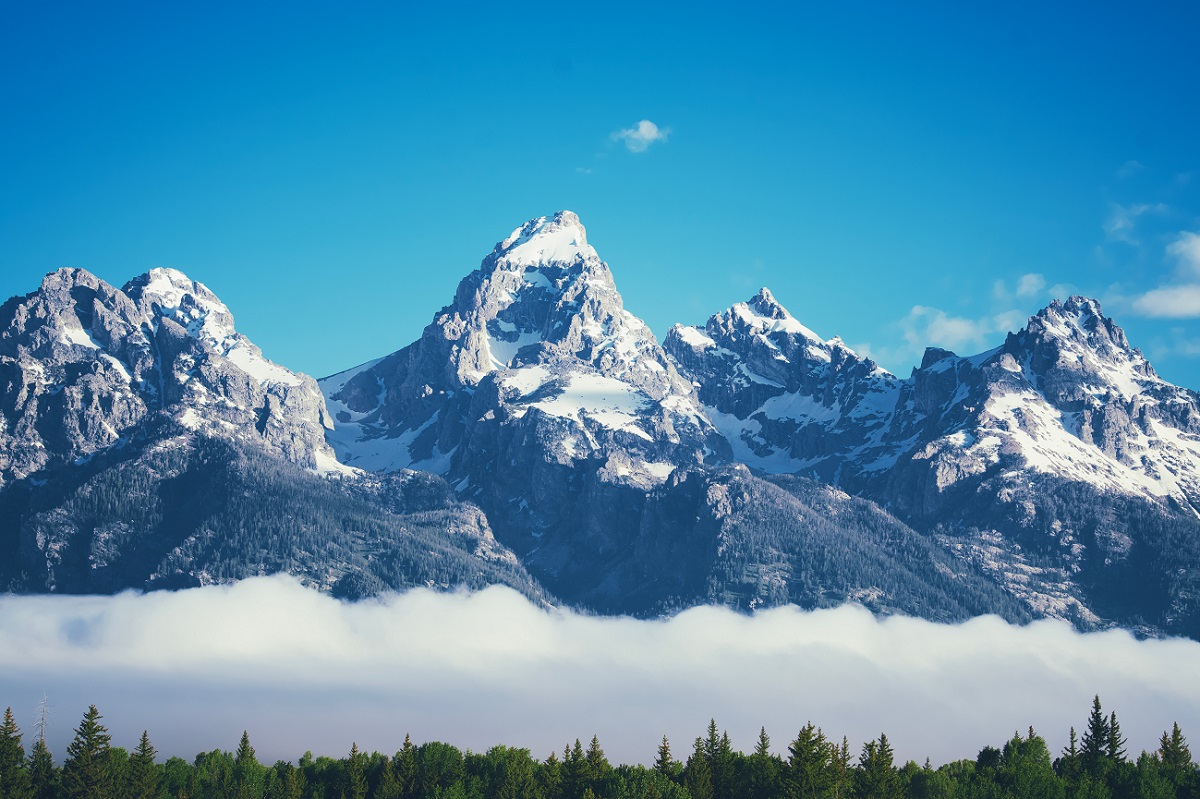
Opening Date: February 26, 1929
Number of Annual Visitors: 3.4 million
Location: Northwest Wyoming
Grand Teton National Park Trails and Hikes
Cascade Canyon Trail: 9.6 miles (15.5 km), Moderate
Paintbrush Canyon Trail: 19.4 miles (31.2 km), Strenuous
Lake Solitude Trail: 15.6 miles (25.1 km), Strenuous
Jenny Lake Trail: 7.7 miles (12.4 km), Easy
Amphitheater Lake Trail: 9.2 miles (14.8 km), Strenuous
Taggart Lake Trail: 3.3 miles (5.3 km), Easy
Bradley Lake Trail: 5.5 miles (8.9 km), Easy to Moderate
Death Canyon Trail: 8.3 miles (13.4 km), Strenuous
Delta Lake Trail: 9.1 miles (14.6 km), Strenuous
Teton Crest Trail: varies in length, Strenuous
Interesting Facts about Grand Teton National Park
The park was named after the Grand Teton peak, which stands at 13,775 feet tall.
The park covers over 300,000 acres and includes the Teton Range, Jackson Hole Valley, and the northern section of the Snake River.
Grand Teton National Park is home to a diverse range of wildlife, including grizzly bears, black bears, wolves, elk, moose, and bison.
The park’s lakes and rivers are known for their clear waters and are popular destinations for fishing and boating.
The park is also known for its excellent hiking trails, including the popular Teton Crest Trail, which offers stunning views of the Teton Range.
Stories about Grand Teton National Park
One of the most memorable experiences in Grand Teton National Park is seeing the abundant wildlife up close. Visitors often report encounters with grizzly bears and moose, which can be both thrilling and a bit nerve-wracking. But it’s these moments that make the park so special and remind us of the power and beauty of nature.
History of Grand Teton National Park
The history of Grand Teton National Park dates back thousands of years, with evidence of human habitation in the region dating back to 11,000 BCE. The park’s modern history began in the late 1800s, when the region became popular among fur trappers and homesteaders. In 1929, the park was established to protect the region’s natural beauty, and today it remains a beloved destination for nature lovers from around the world.
Grand Teton National Park Maps
Grand Teton National Park 2D Maps: Canvas Print Maps
Grand Teton National Park 3D Maps: Raised Relief Maps
Contact Information for Grand Teton National Park
Phone: (307) 739-3300
Address: P.O. Drawer 170, Moose, WY 83012
Website: https://www.nps.gov/grte/index.htm
Grand Teton National Park is a must-see destination for anyone who loves nature and the great outdoors. It is #8 on our Top 10 National Parks. With its stunning mountain vistas, clear lakes, and abundant wildlife, it’s easy to see why this park has captured the hearts of so many visitors over the years. Whether you’re a seasoned hiker or simply looking to soak in the beauty of nature, Grand Teton National Park is an unforgettable destination that should be on everyone’s bucket list.
#9: Glacier National Park (3 Million)
As the sun begins to rise over the peaks of the Rocky Mountains, a majestic landscape comes into view. Towering mountains capped with snow, crystal clear lakes, and lush forests all converge in one breathtaking place: Glacier National Park.
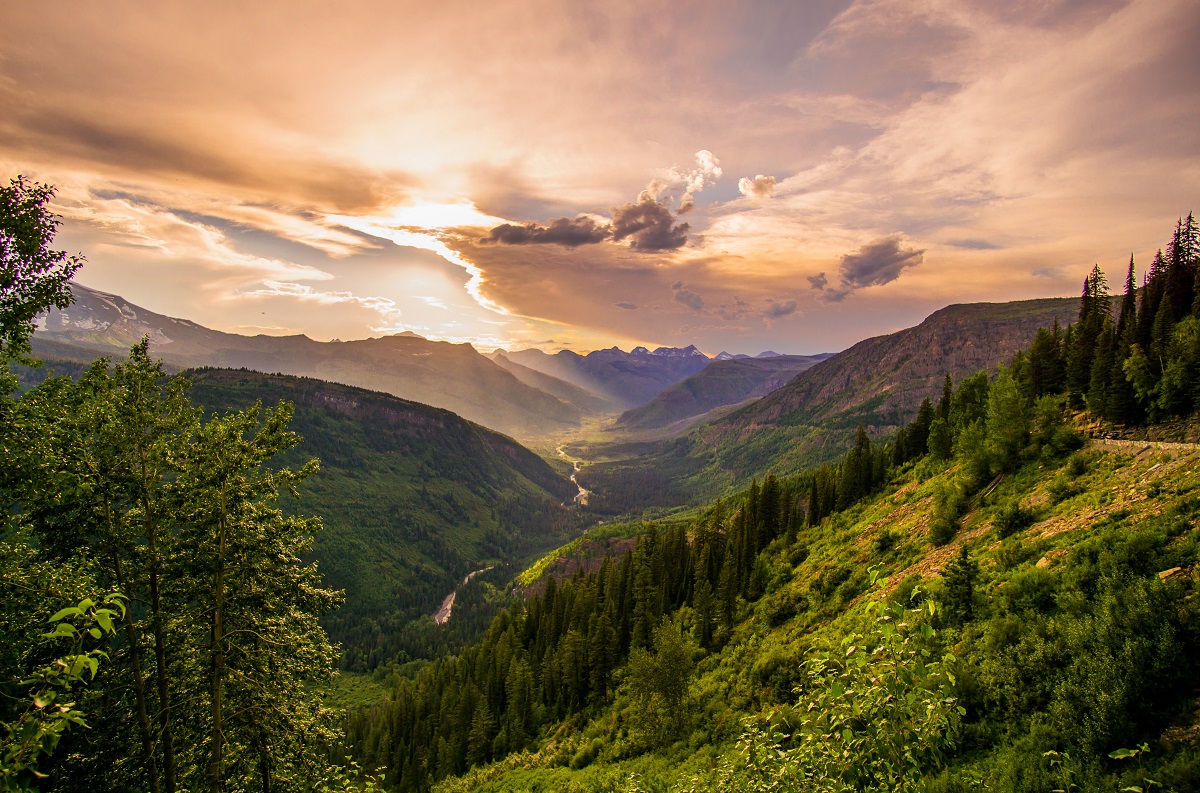
Opening Date: May 11, 1910
Number of Annual Visitors: 3 million
Location: Northwest Montana
Glacier National Park Trails and Hikes
Grinnell Glacier Trail: 7.6 miles (12.2 km), Moderate to Strenuous
Highline Trail: 15.2 miles (24.5 km), Strenuous
Iceberg Lake Trail: 9.6 miles (15.5 km), Moderate
Avalanche Lake Trail: 4.6 miles (7.4 km), Moderate
Hidden Lake Overlook Trail: 2.7 miles (4.3 km), Moderate
Swiftcurrent Pass Trail: 14.8 miles (23.8 km), Strenuous
Cracker Lake Trail: 12.4 miles (20 km), Strenuous
Grinnell Lake Trail: 6 miles (9.7 km), Moderate
Ptarmigan Tunnel Trail: 10.7 miles (17.2 km), Strenuous
St. Mary and Virginia Falls Trail: 3.4 miles (5.5 km), Easy to Moderate
Interesting Facts about Glacier National Park
The park spans over 1 million acres and contains 130 named lakes, more than 1,000 different species of plants, and hundreds of miles of hiking trails.
The park is home to a diverse range of wildlife, including grizzly bears, moose, bighorn sheep, mountain goats, and lynx.
The park is also known for its iconic Going-to-the-Sun Road, which was completed in 1932 and spans 50 miles through the park’s scenic vistas and winding mountain passes.
Stories about Glacier National Park
Visitors to Glacier National Park have countless stories of the park’s beauty and wonder. One visitor recounted a hike to Hidden Lake Overlook, where they were greeted by a herd of mountain goats grazing in the alpine meadows. Another visitor described the thrill of seeing a mother grizzly bear and her cubs from a safe distance while hiking in the park’s backcountry.
History of Glacier National Park
Glacier National Park was established in 1910, making it the tenth national park in the United States. The park’s rugged landscape has long been home to indigenous peoples, including the Blackfeet, Salish, and Kootenai tribes. The park’s first superintendent, William R. Logan, oversaw the development of the park’s infrastructure and the creation of the park’s first ranger force. Since then, the park has become a beloved destination for outdoor enthusiasts from around the world, drawing millions of visitors each year to experience its natural wonders firsthand.
Glacier National Park Maps
Glacier National Park 2D Maps: Canvas Print Maps
Glacier National Park 3D Maps: Raised Relief Maps
Contact Information for Glacier National Park
Phone: (406) 888-7800
Address: P.O. Box 128, West Glacier, MT 59936-0128
Website: https://www.nps.gov/glac/index.htm
Whether you’re seeking adventure or simply looking to immerse yourself in the beauty of nature, Glacier National Park is an unparalleled destination. It is #9 on our Top 10 National Parks. With its breathtaking landscapes, diverse wildlife, and rich history, it’s no wonder that millions of visitors flock to this park every year to experience its awe-inspiring beauty.
#10: Olympic National Park (2.6 Million)
As you drive through the dense forests and winding roads of the Olympic National Park, you can feel the crisp air and the anticipation building up inside you. The sense of awe and wonder that comes with exploring one of the most beautiful and diverse natural wonders in the world is an experience that is hard to put into words. From its towering peaks to its lush rainforests and rugged coastline, Olympic National Park has something for everyone. So, if you’re ready for an adventure like no other, then let’s dive into the wonders of Olympic National Park!
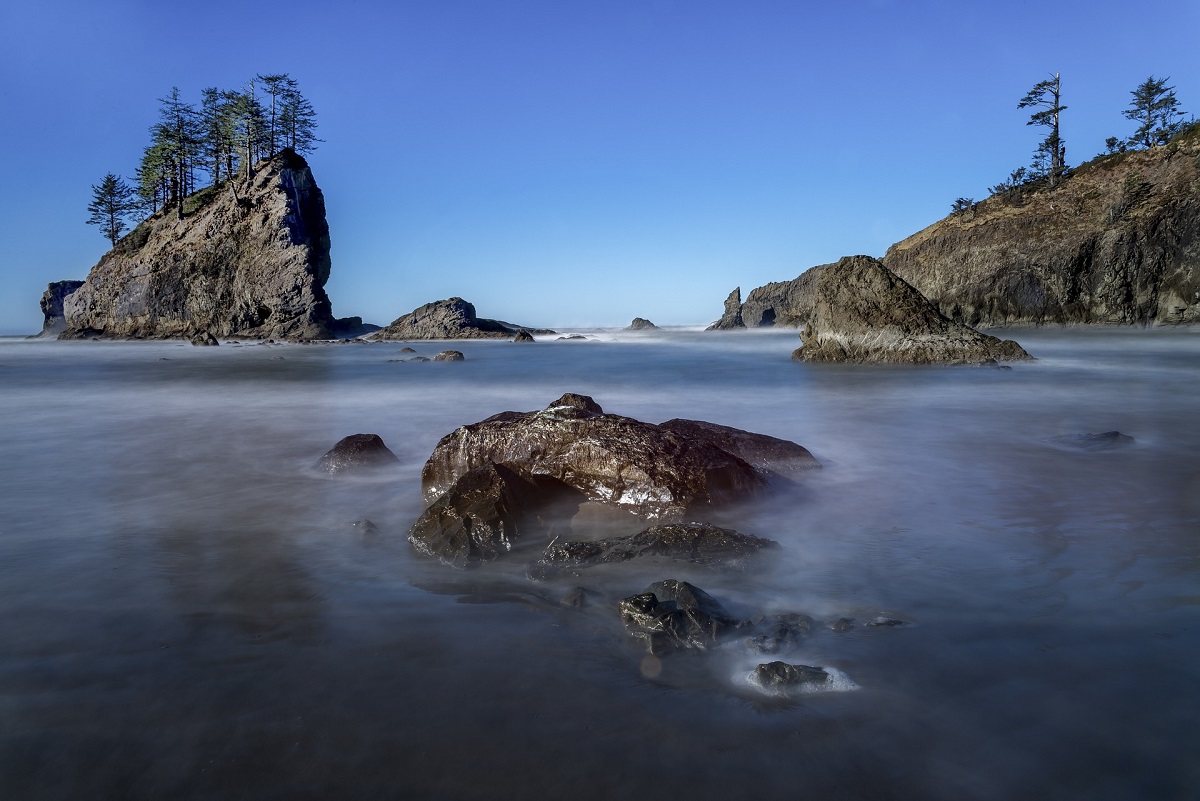
Opening Date: June 29, 1938
Number of Annual Visitors: 2.6 million
Location: Washington State
OIympic Park Trails and Hikes
Hoh River Trail: 17.4 miles (28 km), Moderate
Hurricane Hill Trail: 3.2 miles (5.1 km), Moderate
Sol Duc Falls Trail: 1.6 miles (2.6 km), Easy
Shi Shi Beach Trail: 8.2 miles (13.2 km), Moderate
Mount Storm King Trail: 4.8 miles (7.7 km), Strenuous
Hall of Mosses Trail: 0.8 miles (1.3 km), Easy
Royal Basin Trail: 18.2 miles (29.3 km), Strenuous
Enchanted Valley Trail: 26.6 miles (42.8 km), Strenuous
Ozette Triangle Trail: 9.4 miles (15.1 km), Moderate
Third Beach Trail: 3.6 miles (5.8 km), Easy
Interesting Facts about Olympic National Park
Olympic National Park is home to Mount Olympus, the highest peak in the park, which stands at 7,980 feet tall.
The park contains three distinct ecosystems: temperate rainforests, rugged coastline, and alpine meadows.
The Hoh Rainforest, located in the park, receives an annual rainfall of up to 170 inches, making it one of the wettest places in the United States.
Olympic National Park is also home to a diverse range of wildlife, including elk, black bears, cougars, and gray wolves.
Stories about Olympic National Park
One of the most unique experiences you can have in Olympic National Park is visiting the Hoh Rainforest. The lush greenery and towering trees make you feel like you’re in another world. As you wander through the misty forest, you may hear the haunting call of an owl or catch a glimpse of a shy deer hiding among the trees. The magical atmosphere of the Hoh Rainforest is a truly unforgettable experience.
History of Olympic National Park
Olympic National Park was established in 1938 and was designated as a World Heritage Site in 1981. The park was originally inhabited by various Native American tribes, including the Quileute, Hoh, and Makah. In the late 1800s, the area began to attract settlers and was later used for logging and mining. Concerns about the environmental impact of these activities led to the establishment of the park, which has since become a popular destination for nature lovers and outdoor enthusiasts from around the world.
Contact Information for Olympic National Park
Phone: (360) 565-3130
Address: 600 E Park Ave, Port Angeles, WA 98362-6798
Website: https://www.nps.gov/olym/index.htm
From the rugged beaches of the Pacific coast to the ancient rainforests of the Hoh River Valley, Olympic National Park is a place of incredible diversity and beauty. It is #10 on our Top 10 National Parks. As visitors explore the park’s many wonders, they are treated to breathtaking views of snow-capped peaks, sparkling lakes, and verdant forests. With abundant wildlife, miles of hiking trails, and countless opportunities for adventure, Olympic National Park is a place where visitors can immerse themselves in the wonder and majesty of nature.
From our Top 10 National Parks, no matter which national park you choose to visit, you’re sure to be amazed by the beauty and grandeur of America’s natural wonders. Whether you’re a hiker, wildlife enthusiast, or just looking for a peaceful escape from the hustle and bustle of everyday life, these national parks offer something for everyone. So pack your bags, hit the road, and get ready to make some unforgettable memories!
National Parks and Maps
National parks and maps have an inseparable connection, as the latter is essential for exploring the former. National parks are sprawling landscapes of natural beauty, and it can be challenging to traverse them without a map. Maps are the gateway to unlocking the secrets of a national park, as they reveal its vast expanses of forests, mountains, lakes, and rivers. Maps also showcase the trails, campgrounds, and other points of interest that can help visitors make the most of their time in the park.
National park maps are not just functional tools, but they are works of art. They display the intricate details of the park, from the topography to the flora and fauna. The colors and textures on the map represent the different ecosystems and biomes present in the park, giving visitors a visual understanding of the complex relationships between the various elements that make up the park.
National parks and maps are two sides of the same coin, each one enhancing and complementing the other. Together, they offer visitors the opportunity to discover and explore some of the most beautiful and awe-inspiring landscapes on the planet. Whether you’re a seasoned park enthusiast or a first-time visitor, a national park map is an essential tool that will help you make the most of your experience, and immerse yourself in the natural wonders of the world.
Learn more about Maps
- Topographical Maps: Representation of the physical features of a region or area.
- Contour Maps: Representation of the contours of the land surface or ocean floor.
- Raised Relief Maps: Representation of land elevations with raised features indicating landforms.
- Terrain Maps: Representation of the physical features of a terrain or landmass.
- USGS Topographic Maps: Representation of topographic features and land elevations based on USGS data.
- USGS Historical Topographic Maps: Representation of historical topographic maps created by the USGS.
- Watershed Maps: Representation of the areas where water flows into a particular river or lake.
- Elevation Maps: Representation of land and water elevations with high precision.
- Physical Maps: Representation of physical features of the Earth’s surface such as landforms, oceans, and plateaus.
- Bathymetric Maps: Representation of the topography and features of the ocean floor.
- NOAA Maps: Representation of atmospheric, oceanographic, and environmental data by NOAA.
- Nautical Maps: Representation of the underwater features and depth of an area for navigation purposes.
- Geologic Maps: Representation of the geologic features of an area such as rock types, faults, and folds.
- Satellite Maps: Representation of earth from high-definition satellite imagery.
Contact us today to learn more about our services and how we can help you achieve your goals.
